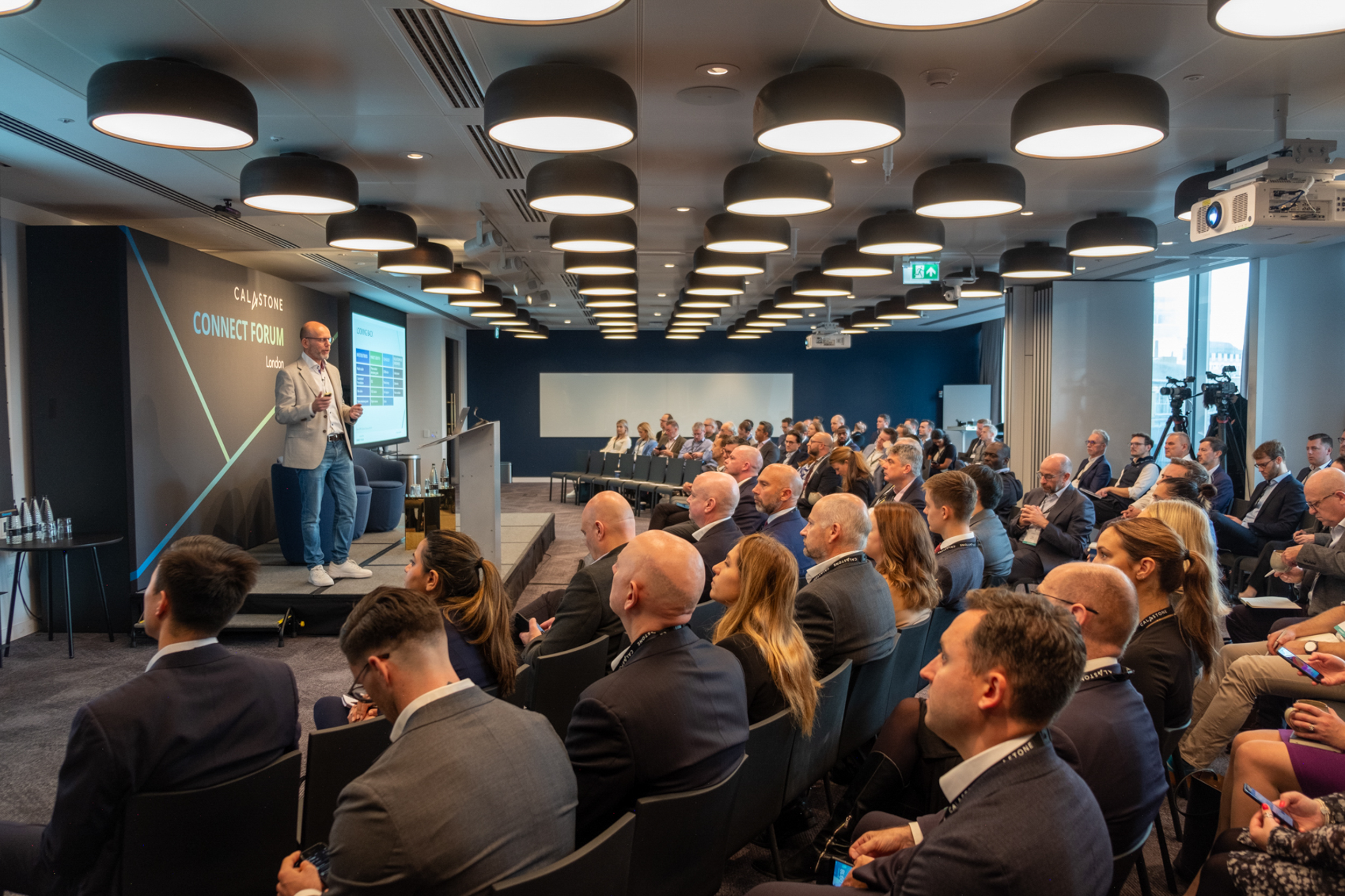Fund administration as a business includes a broad range of services at different stages of automation. To sustain a scalable fund administration business in today’s market environment, service providers will need to harness new technologies to upgrade the client experience, if they have not already done so.
To identify the issues that are top of mind for fund administrators and their clients and to explore what they see as the most promising areas of opportunity, global funds network Calastone recently partnered with Global Custodian to conduct an industry survey, attracting input from some 300 respondents. These ranged from commercial banks offering fund administration services (50%) to asset managers handling these functions in-house, (37%) and non-bank fund administrators (12%).
Responses came from multiple markets including the UK, USA, Singapore, Australia, South Africa and Hong Kong, providing a useful snapshot of how the global fund administration industry is positioning itself to address the pressures arising from technological advances and market reforms.
Before exploring where investment is most needed, it is useful to highlight where firms’ investment dollars have been going over the past few years. Survey participants were asked to select up to three areas that within their own organisations had received the most investment over the past three years (See figure 1).

Compliance Support received the most mentions, which is perhaps not surprising, given the regulatory pipeline of the past decade or so. It is, however, worth noting that no single service area appears to have captured the bulk of new spend, suggesting that efficiency gaps vary by firm rather than across the industry as a whole.
It appears not to be the case, however, that those service categories at the lower end of recent spend are set to attract the bulk of future investment. While clients have been vocal in recent years about the need for onboarding procedures to improve, compliance support will continue to attract whatever investment is needed to clear any anticipated regulatory hurdles (See figure 2). One might, however, have expected greater expectations of investment in areas such as exceptions processing and transfer agency, which could both improve the client experience and enhance the bottom line. Exceptions processing may, by definition, be difficult to automate, but the rewards are likely to be great in terms of reducing the draw on relatively expensive manual resources.

Transfer agency (TA), meanwhile, is often viewed as a low-margin business, unworthy of investment beyond the essential. Some 47% of survey respondents saw TA as “a necessary, but unexciting part” of their fund administration activities, though a third identified it as a growth opportunity (See figure 3). Interestingly, this figure was highest among non-bank fund administrators (48%), who are perhaps less dependent on enterprise-level approval processes for IT investment, where different functions compete for spend.

These firms may well have an eye on the changes that will be wrought by the twin innovations of tokenisation and blockchain. Views on the impact of these developments were quite polarised. Roughly half of the total survey sample felt that the advent of tokenised assets would be manageable with existing technology and expertise, while 44% thought they would require a radical overhaul of the TA function (See figure 4).

Almost 40% of respondents said they were either exploring or already implementing projects based on distributed ledger technology (See figure 5). These ranged widely from infrastructure-related projects such as CHESS replacement in Australia to payments transfer, KYC, transfer agency and reporting.
In summary, fund administration will always struggle to be seen as at the glamorous end of the securities-related financial services, to which investment dollars will always flow as a matter of course. It is, however, an area where opportunities still abound.
Those firms that seize the chance to innovate by drawing on newly available technologies stand to gain both in terms of client engagement and bottom line. Those that are content to rely on legacy underpinnings may find themselves unprepared for the market changes ahead.

Expert View
We asked Simon Keefe, head of product, Calastone, to review the survey results and comment on their implications. His observations follow.
“Transfer agents (TAs) have made do in the back-office for years on aged systems. The focus from the administrators has been on client attraction from digital front-ends to the point where the back-office cannot keep up with advances elsewhere.
There is a misperception that the back office will cope with whatever is thrown at it as well as a degree of turning a blind eye to what is really happening. We are already seeing that current back-office administration systems cannot cope with new products being offered by asset managers.
TA should be about servicing clients (asset managers) through data insights and market trends, and their clients’ clients (intermediaries and investors) through real-time information and new ways of distributing the funds.
I note that 51% of respondents to the survey thought that even with the advent of tokenisation, TA would be manageable with existing technology and expertise, while 44% said it would require a radical overhaul of the TA function. Some 5% said it would eliminate the need for TA.
In my view, there will always be a need to service the clients, but tokenisation will require a complete change from the way administrators – including the TA function – operate today to much leaner models concentrating on higher margin value-add services. If they do not do this now, the new technology could enable the asset manager to take these activities back in-house. One direct result of tokenisation is likely to be a lower cost to run a collective investment; this cannot be matched on legacy systems.
I do see a role for blockchain/DLT in this new dispensation; notably in the ability to hold an end-to -end record of investors, funds, share classes and underlying assets, providing one place for every interested party to see the end-to-end flow of data and value.
Having all of this data accessible on one immutable permissioned infrastructure with real-time access can completely transform the investor experience and outcome as well as the administration model, keeping all data in sync across all parties; however, the key is to bring the current world along and ensure there is little barrier to entry.”
(First published in Global Custodian 27/07/21: https://www.globalcustodian.com/thought-leadership/where-should-fund-administrators-be-investing/)





















